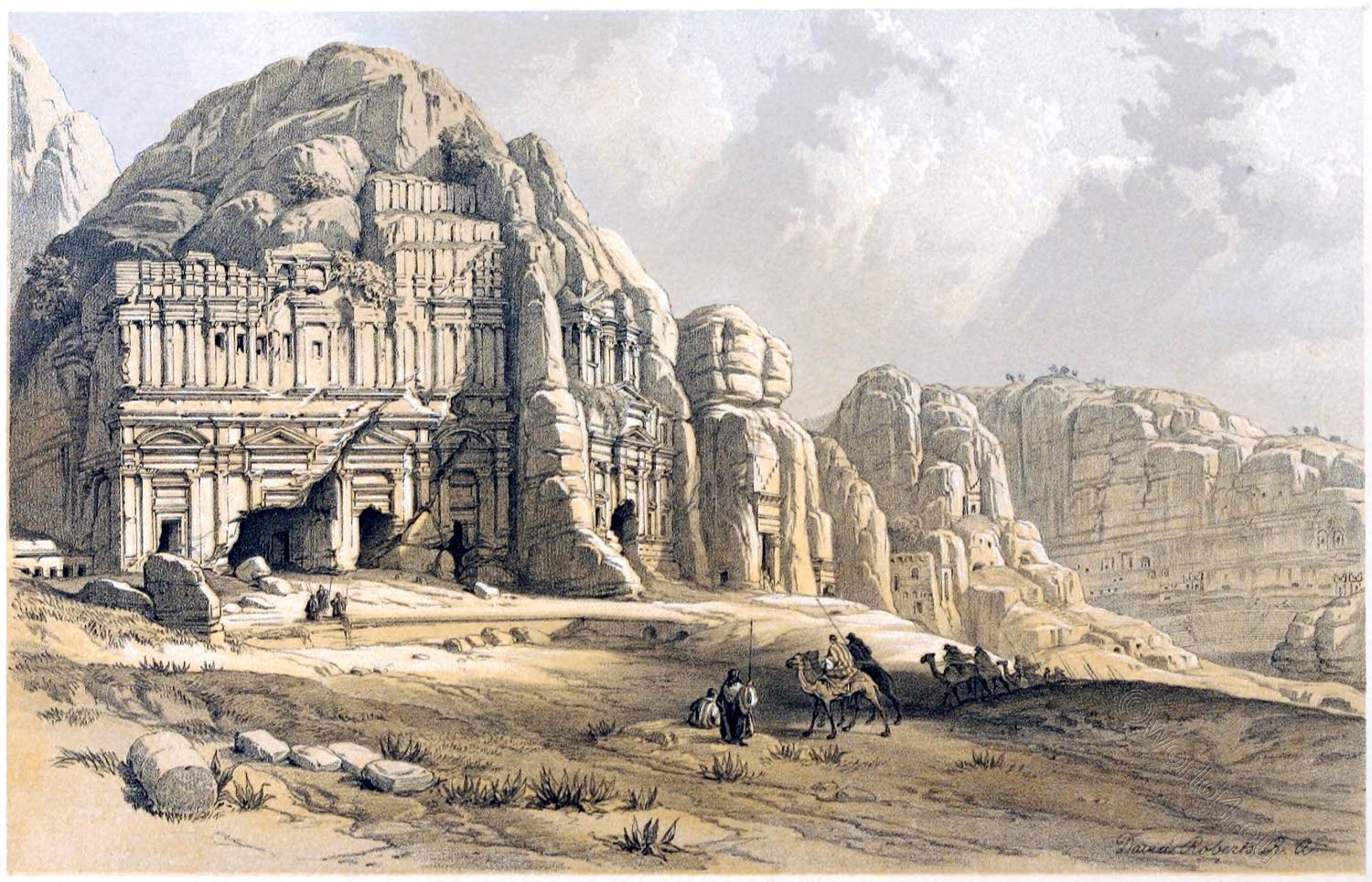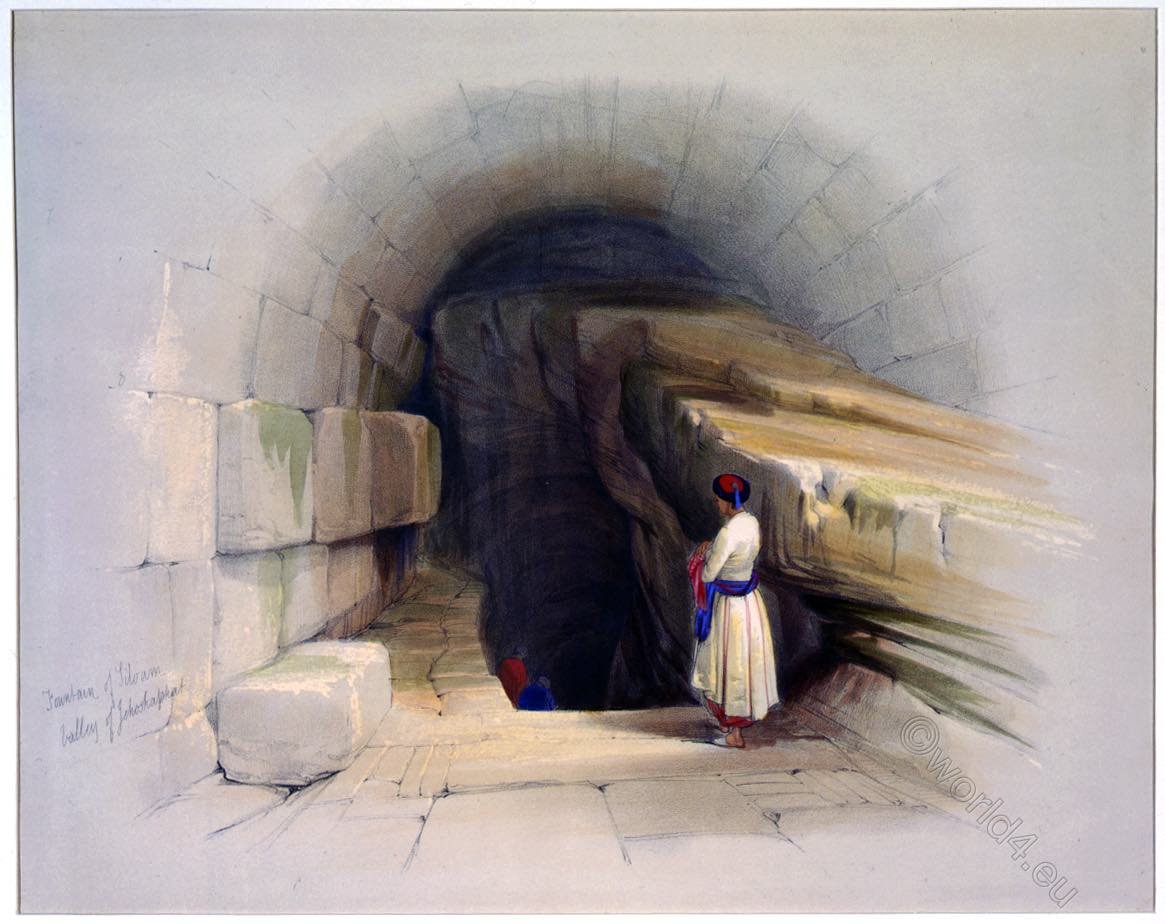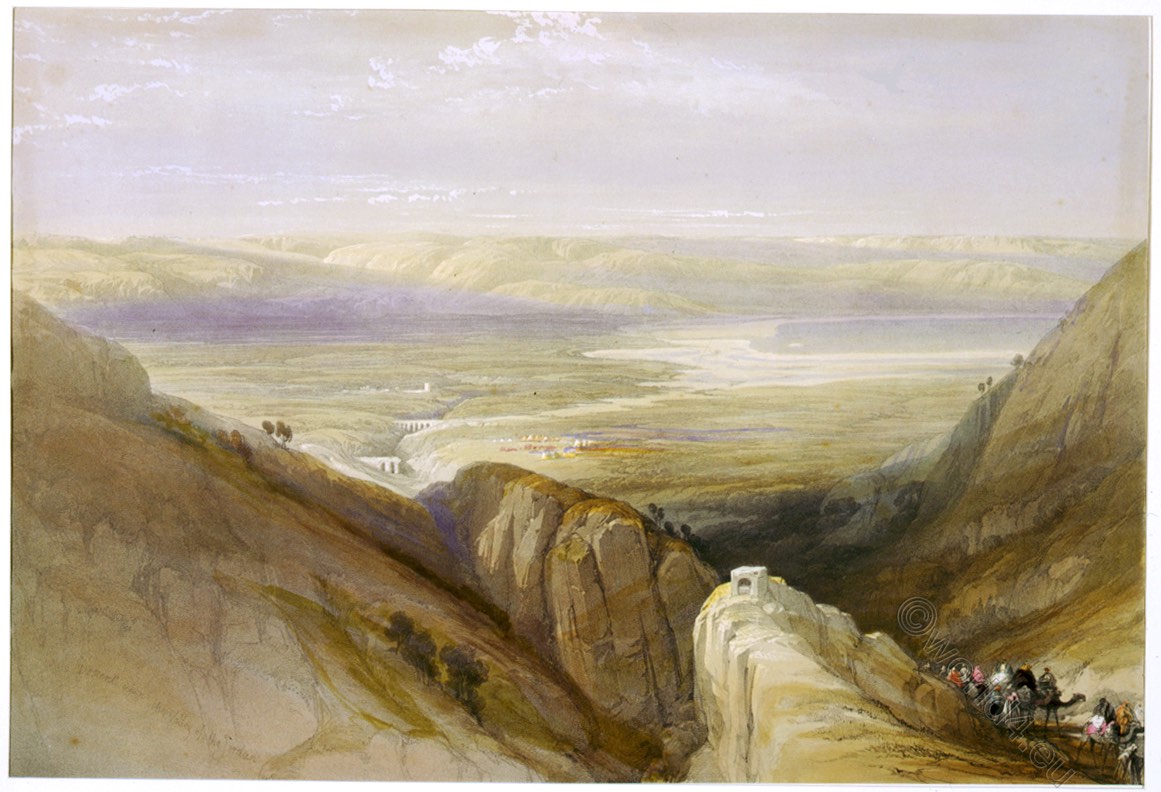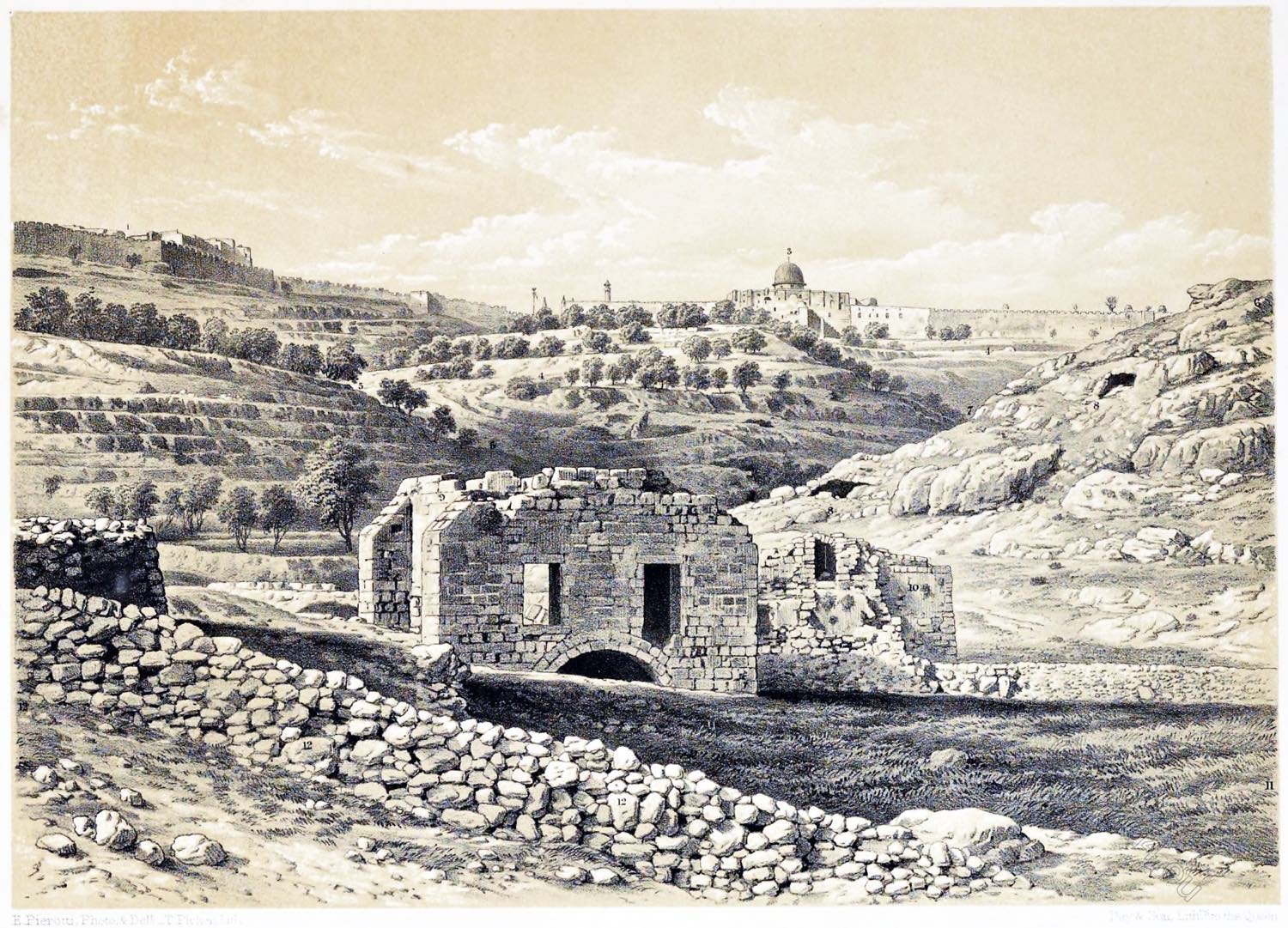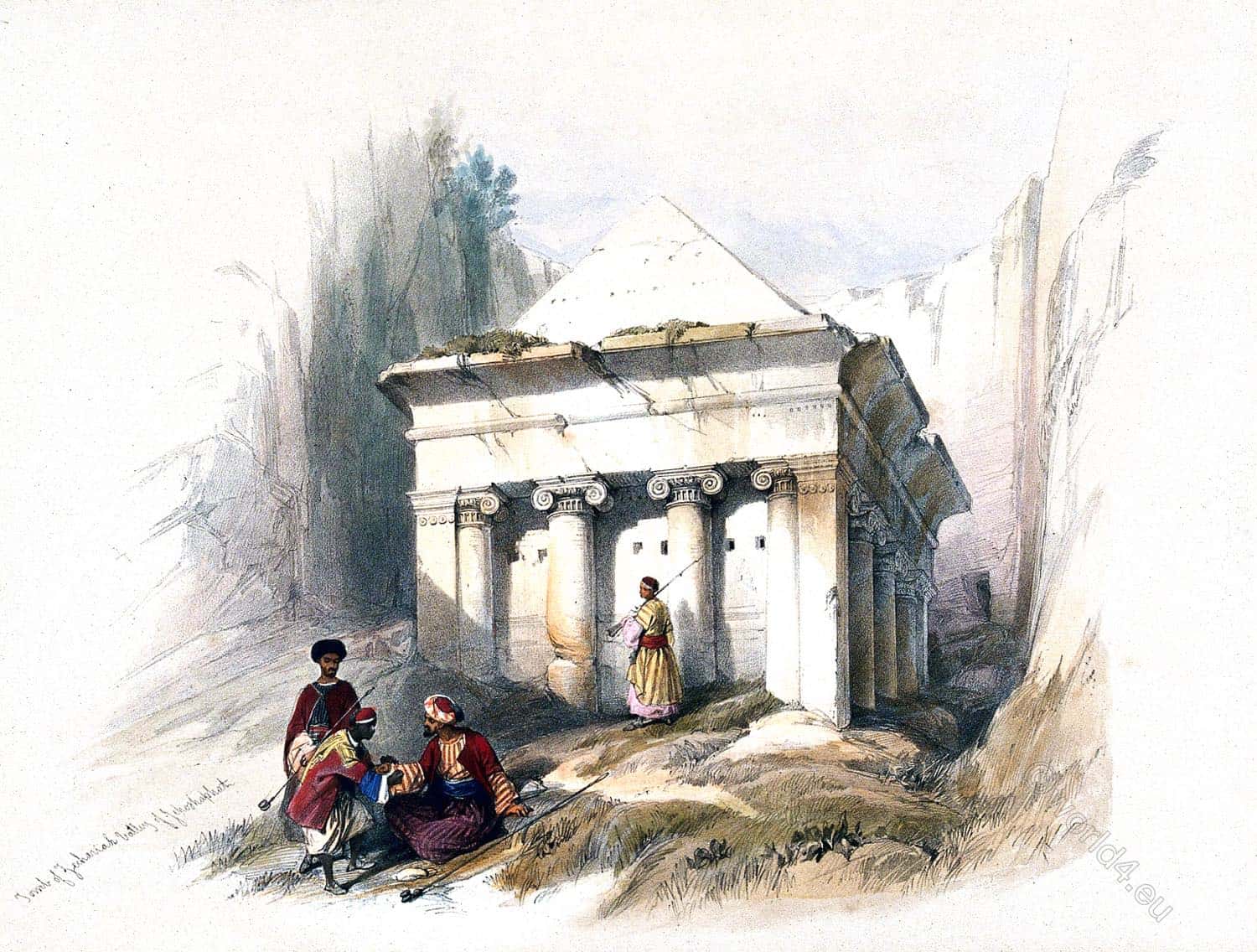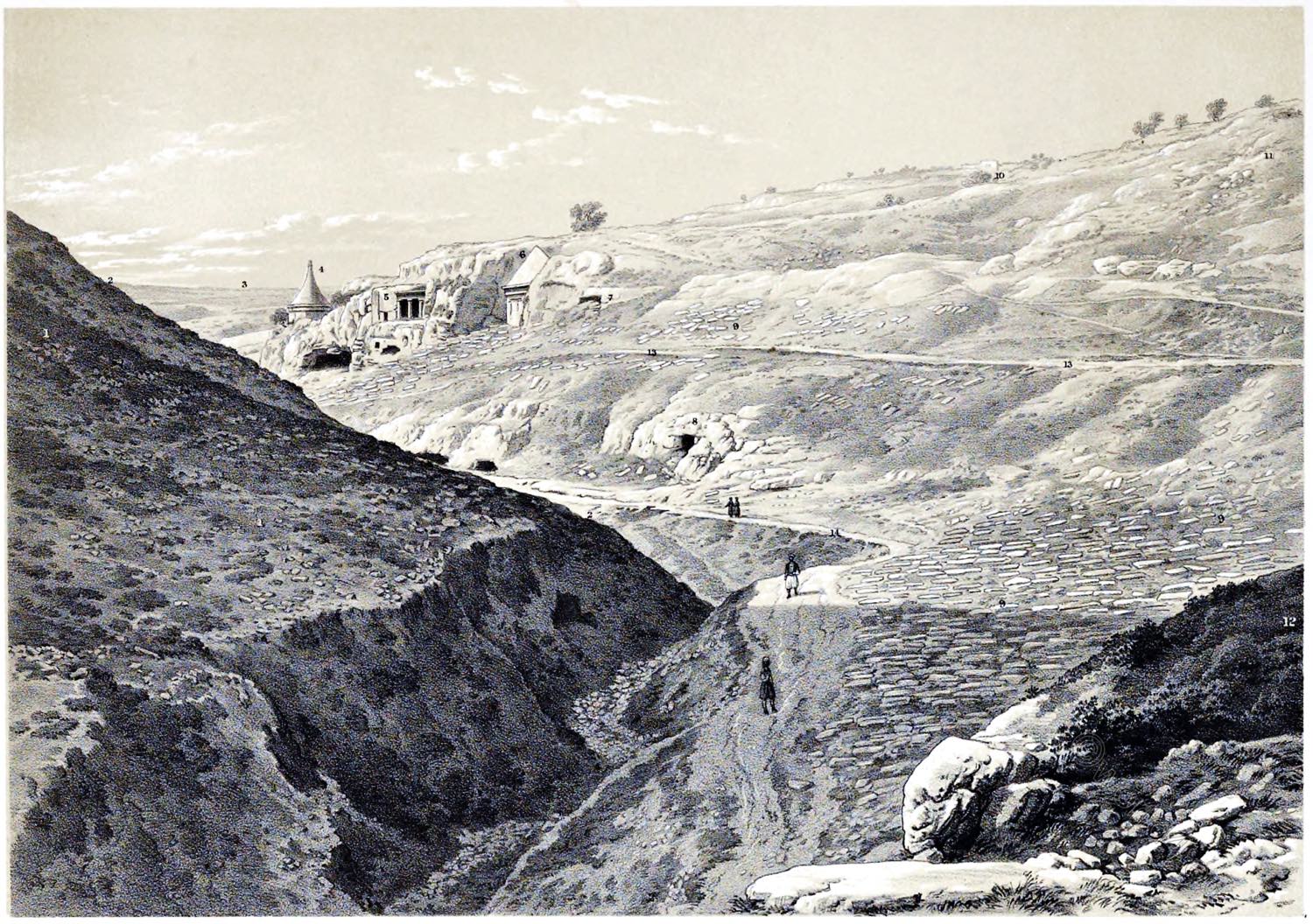
VIEW OF THE VALLEY OF JEHOSHAPHAT.
by Ermete Pierotti
PLATE XLIX.
- Mount Moriah.
- Valley of Jehoshaphat.
- Mount Scopus.
- Tomb of Absalom.
- Tomb of S. James.
- Tomb of Zacharias.
- Ruined Tomb.
- Cave. Ancient Tomb.
- Jewish Cemetery.
- Arab House.
- Mount of Olives.
- Mount of Offence.
- Road to Siloam.
- Road to the Kidron.
The Valley of Jehoshaphat is a valley identified today with a part of the Cedron River that lies exactly between the Temple Mount or Esplanade of the Mosques and the Mount of Olives, in East Jerusalem.
During the Crusades in the 11th and 13th centuries, the valley was guarded by the Knights Templar.
In the seventeenth and eighteenth centuries, the expression “We shall not meet again except in the Valley of Jehoshaphat” implied that we were parting and would not meet again, except in the afterlife; the Valley of Jehoshaphat being the place “where the common people think the Universal Judgement is to take place”, that is to say, where – for some Catholics – the dead should be resurrected on the Day of Judgement.
In the Book of Joel it says (Joel 3:2 and 3:12): I will gather all the nations and bring them down to the Valley of Jehoshaphat, and there I will judge them, my people, my land, Israel, which they have scattered among the nations, and my land which they have divided. In the Christian translation: “(…) The nations shall awake and go up to the valley of Jehoshaphat! For there I will sit and judge all the nations around”…. Indeed, Church teaching has always referred to this valley as the place of the Last Judgement. Another reference to this mystical place is found in the Divine Comedy, in the tenth canto of Dante’s Inferno.
In addition to the biblical text, various suggestions have been made over the centuries to determine the actual location of the Valley of Jehoshaphat. According to other interpretations, however, it is only imaginary and has no geographical significance.
In the 4th century, the Itinerarium Burdigalense *) reports that the valley of Jehoshaphat is the valley of the Cedron. St. Eusebius and St. Jerome affirm this thesis (Onomasticon), while Cyril of Alexandria seems to mention a different place in his writings; early Jewish tradition even denied the actual existence of this valley. The identification with the Cedron Valley was probably due to the fact that the necropolis of Jerusalem was located here. Josiah scattered the ashes of the idol of the goddess Astarte, which had been burnt in Kedron, on the graves of the children of Israel (Bible, 2 Kings 23:4).
*) The Itinerarium Burdigalense (also known as Itinerarium Hierosolymitanum) is the oldest known manual of a pilgrimage to the Holy Land. It was written by an anonymous Christian pilgrim from Burdigala (Anonymus Burdigalensis), today’s Bordeaux, on the occasion of a journey in the years 333-334.
Source: Jerusalem Explored. Being a description of the ancient and modern city, with numerous illustrations consisting of views, ground plans, and sections by Ermete Pierotti; translated by Thomas George Bonney (Fellow of St Johns College, Cambridge). London: Bell and Daldy; Cambridge: Deighton, Bell and Co. 1864.
Continuing
Discover more from World4 Costume Culture History
Subscribe to get the latest posts sent to your email.

